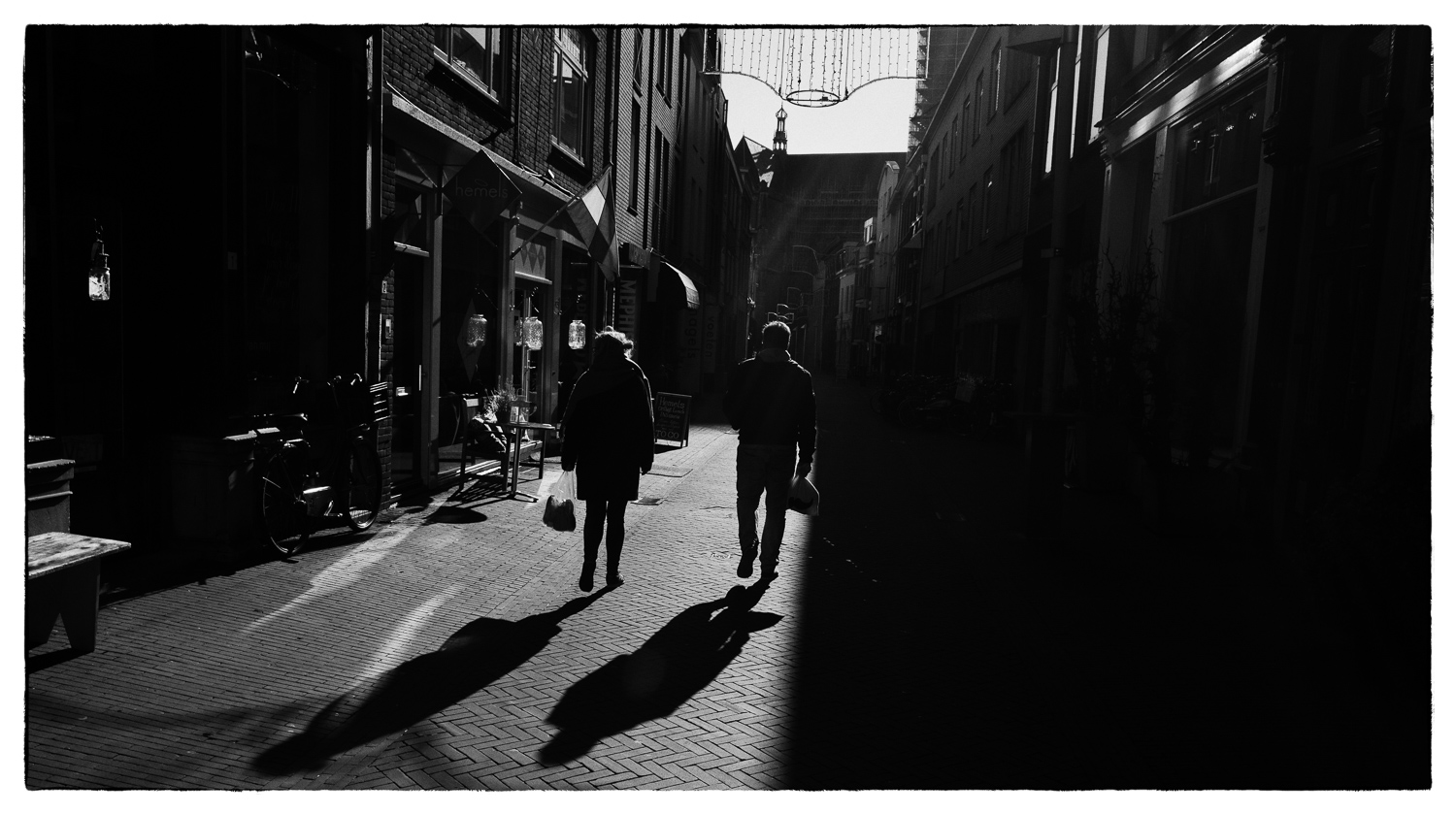judsonzhao
Well-known
For the money definitely go VM28/2
semilog
curmudgeonly optimist
But it puzzled me that technical excellence probably isn't everything. How come that Zeiss even claims about the 28mm: ‘Its features include high image quality without color fringes, haze or reflection.’ Were they pure lying? Looking at the MTF, this would be slick marketing gibberish, or not?
At f/5.6, the MTFs of the Leica Elmarit ASPH and ZM 28/2.8 lenses are actually not preposterously different. They're similar enough that I would not expect to see a huge difference in pictorial photography. And as others have pointed out, the pre-ASPH Elmarit and the ZM are very close in performance across the aperture range. Remember: many, many great photos were and STILL ARE being taken by famous photographers with the pre-ASPH Elmarit, which was and still is an absolutely kickass lens. It's not hard to find recent pictures of Magnum photographers using the pre-ASPH elmarit on their digital M bodies.
semilog
curmudgeonly optimist
Before you start interpreting MTF graphs I do suggest reading the excellent primer on the subject on the Zeiss website.
Yes, the Zeiss Biogon MTF APPEARS to indicate poor off center performance, but in fact does not.
The drop in measured contrast in this case is due to the field curvature in the Biogon. It is atypical because it bends back toward the focal plane instead of away. The practical effect however is actually (usually) to the benefit of street shooters as it allows the closest corners (the ground?) to be critically sharp. You can see the effect on distant objects at the corners of the frame if you look closely, but stopped down to F5.6 or smaller it's not really visible in general photography.
The lens has great control of astigmatism and maintains contrast above 40% even at 40lppm. Folks, Zeiss has been making lenses for some time now, they won't release a clunker...they don't have to.
GREAT points.
Another example is the ZM 18/4.
The MTF looks less-than-perfect on paper but the lens is simply staggering in real-wold applications, probably for exactly the same reasons.
Always remember that the MTF tells us what is happening in a single, flat focal plane, usually at infinity. And most of our photographs are not of single, flat focal planes at infinity. As Dan says, Zeiss has been designing top-flight glass for a long time.
MCTuomey
Mentor
thread resurrected -
i haven't shot the elmarit ASPH. i have shot the ZM 28 on film and digital. the MTFs understate this lens' resolution performance, imho. i'm not very technical but what Dan says above is consistent with my experience. if i were buying an f/2.8 28, i'd have the ZM. it's especially nice on the M8, where i shot it most. great street lens:

NOLA Mar 2011-007-burn-Web by Mike Tuomey, on Flickr

NOLA Mar 2011-013-burn-Web by Mike Tuomey, on Flickr

NOLA Mar 2011-011-burn-Web by Mike Tuomey, on Flickr
i haven't shot the elmarit ASPH. i have shot the ZM 28 on film and digital. the MTFs understate this lens' resolution performance, imho. i'm not very technical but what Dan says above is consistent with my experience. if i were buying an f/2.8 28, i'd have the ZM. it's especially nice on the M8, where i shot it most. great street lens:

NOLA Mar 2011-007-burn-Web by Mike Tuomey, on Flickr

NOLA Mar 2011-013-burn-Web by Mike Tuomey, on Flickr

NOLA Mar 2011-011-burn-Web by Mike Tuomey, on Flickr
Tom A
RFF Sponsor

Zeiss Biogon 28mm f2.8 at closest focussing distance. Acros 100 in Beutler 1:10 for 7 min.
It is a good lens, comparable to my Elmarit 28mm f2.8 vIII. I is not as sharp and contrasty as the 25mm f2.8 or the C-Biogon 35mm f2.8 though. At least that is my personal opinion.
Alberti
Well-known
As I switched to the Leica M , so now I "test" all my lenses. How do they look and feel?
The Biogon 28 is a stellar performer on the M.

https://www.flickr.com/photos/8534659@N02/15637090791/sizes/k/
Have a look at the brick wall: it is sharp everywhere, even though the lens is fully open. The advantage is of course the favorable contrast where the levels are not high. The bricks stand out like with no other lens. I do notice the leaves exhibit some glow, there was little bit of wind. But still that is characteristic I found.
I also like this one, a different kind of brick wall, like Portugese Azuelas this time:

https://www.flickr.com/photos/8534659@N02/15453646488/sizes/k/
The Biogon 28 is a stellar performer on the M.

https://www.flickr.com/photos/8534659@N02/15637090791/sizes/k/
Have a look at the brick wall: it is sharp everywhere, even though the lens is fully open. The advantage is of course the favorable contrast where the levels are not high. The bricks stand out like with no other lens. I do notice the leaves exhibit some glow, there was little bit of wind. But still that is characteristic I found.
I also like this one, a different kind of brick wall, like Portugese Azuelas this time:

https://www.flickr.com/photos/8534659@N02/15453646488/sizes/k/
Alberti
Well-known
GREAT points.
Another example is the ZM 18/4.
The MTF looks less-than-perfect on paper but the lens is simply staggering in real-wold applications, probably for exactly the same reasons.
Always remember that the MTF tells us what is happening in a single, flat focal plane, usually at infinity. And most of our photographs are not of single, flat focal planes at infinity. As Dan says, Zeiss has been designing top-flight glass for a long time.
And another thing: slight curvature is helpful for a rangefinder shooter: one can focus on a subject in the to-be corner, turn the camera away till framed, and the original point of focus remains fairly sharp, wide open.
Alberti
Well-known
Dektol Dan
Well-known
28mm Biogon Bashing?
28mm Biogon Bashing?
A favorite pet peeve.
28 Biogon, M6, Porta:



28mm Biogon Bashing?
A favorite pet peeve.
28 Biogon, M6, Porta:



Addy101
Well-known
Welcome in Utrecht, stranger from HollandTraditional city scape
View attachment 100711
https://farm6.staticflickr.com/5597/15584679402_7483b68d66_k_d.jpg
ZM28@M
Alberti
Well-known
This picture from the bright side of life, shot plain against the light.

I appreciate the incredible details of this lens on the M-240.
Just a slight comment: Over the years I have the lens, the focussing goes stiffer and stiffer so I will have to have it lubricated again by van Maanen in Holland soon. That is the only part where the lens is not up to standards.

I appreciate the incredible details of this lens on the M-240.
Just a slight comment: Over the years I have the lens, the focussing goes stiffer and stiffer so I will have to have it lubricated again by van Maanen in Holland soon. That is the only part where the lens is not up to standards.
Share:
-
This site uses cookies to help personalise content, tailor your experience and to keep you logged in if you register.
By continuing to use this site, you are consenting to our use of cookies.

